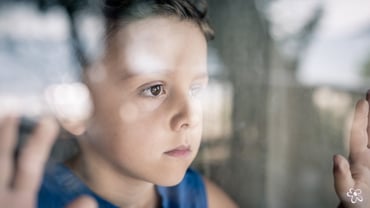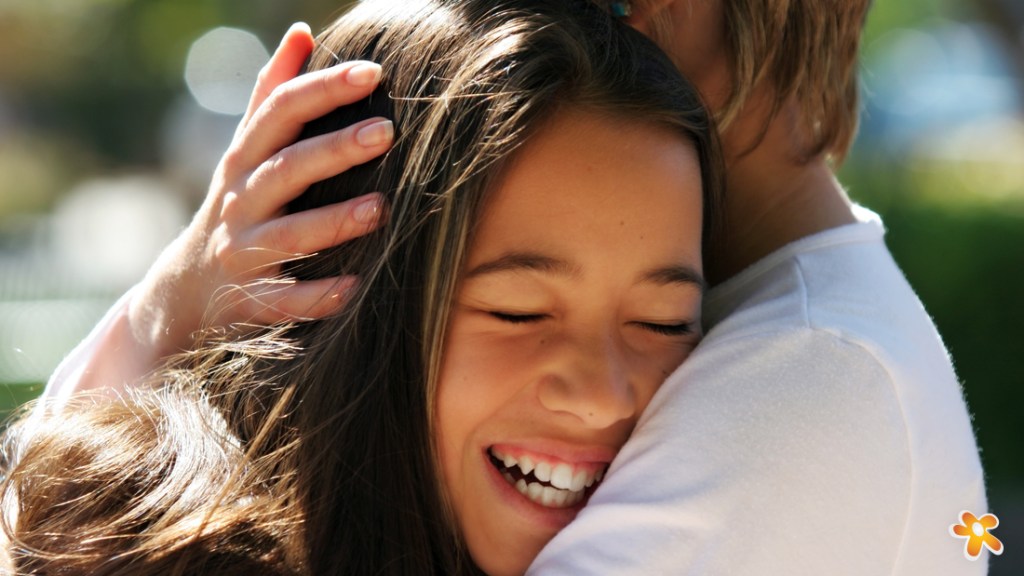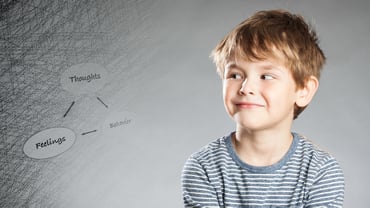The Connection Between Our Thoughts, Feelings, and Behaviors: Part 1
Have you ever asked your child, “How are you feeling?” or “What do you think about that?”. If so, you’ve used a therapeutic technique! One of the biggest misconceptions about therapy is that all of your time is spent laying on a couch talking about feelings. While talking about your feelings is an integral part of therapy, there are several other key elements as well. One of them includes identifying our thoughts, feelings, behaviors, and the relationship between them. A model of therapy that focuses are these three elements is called Cognitive Behavioral Therapy (CBT).
In this three part series, we’ll go a little deeper into what CBT is, what it aims to do, and ways we can implement CBT to reduce negative thoughts, feelings, and behaviors. It is our hope that you will walk away from this with increased knowledge of how CBT could be helpful in your child’s life or the lives of children you work with.
Developed in the 1970s, CBT has become one of the most evidence-based approaches to help kids and adults combat anxiety and depression. It’s also become the starting point for developing healthy coping skills.
So how does it work? CBT focuses on three main areas in our lives: how we feel, what we think, and how we act. The model reinforces that all of these areas are constantly influencing each other. For example, 6-year-old Billy might have several ideas about why his day is going to go badly (thoughts). His head or stomach may then begin to hurt (behavior), influencing Billy to act grouchy or irritable (feeling), and actually have a bad day.
Therapists that utilize CBT techniques might approach Billy in a variety of ways. Perhaps they might help him identify his thoughts and feelings or assess whether or not those thoughts are accurate and helpful. If Billy woke up and thought, “I’m going to have a good day”, his mood and feelings would likely change to positive ones. As a result, he’s going to act in a way that lines up with what he’s thinking and feeling.
Adults often grasp the concepts in CBT without even noticing. How many of us have taken a look at our bank account and thought, “Oh no! How am I going to make ends meet?” This line of thinking most likely led to a sinking feeling of doom and gloom. But then we might remember that it’s almost pay day, and our mood suddenly changes. What did we do? We changed our thoughts. We took a negative thought and replaced it with a positive one. That changed our mood, and probably changed how we acted.
Children, on the other hand, often need help identifying what they are thinking and how they are feeling. Often we see how they are feeling through their behaviors. If a child is acting out or especially non-compliant, they might be feeling hungry, tired, or grumpy. Our job, as clinicians and parents, is to assist children in being able to recognize and verbalize those thoughts and feelings instead of acting them out. But before we can do that, we have to do the difficult job of taking the time to understand our child and not just assuming that he/she is misbehaving. Ways to do that might be:
- Asking children questions that would encourage the child to communicate his/her thoughts and feelings (i.e. How are you feeling today? What do you think about when you’re? Are there any thoughts or pictures that go through your mind? What popped into your head?)
- Encourage the child to draw his/her feelings or thoughts. Great ways to do this might be drawing a person and creating a thought bubble. The parent can then encourage the child to fill out the thought bubble.
- For young children, create a picture of multiple facial expressions. Have the child point to which facial expression he/she is feeling. This expression creates space for a great dialogue on what each feeling means.
Older adolescents and teens may also need help identifying their thoughts and feelings. Creative ways of encouraging teens to communicate cognitions and feelings might include:
- Asking open-ended questions like, “If I were to play a song about your thought process or feelings, what song would I play?” or “What were you saying to yourself when happened?”
- Giving them a journal to keep track of their thoughts and feelings
Being able to identify and communicate one’s thoughts and feelings is the first step in CBT. However, the next step, changing one’s thoughts, feelings, and behaviors, can be the most helpful. We’ll take a look at that step in our next article on CBT series.
Read Part 2: Don’t Believe Everything You Think
Read Part 3: Get Rid of that Stinkin’ Thinkin’
Courtney Bancroft, MA, LCMHC is a Licensed Clinical Mental Health Counselor she is part of an interprofessional collaborative team at Carolina Pediatric Therapy, including behavioral health, occupational therapists, physical therapists, speech-language pathologists, and psychologists, dedicated and promoting children's development and well-being. Her experience involves working with children struggling with anxiety, depression, ADHD, mood disorders, and a history of trauma, among other challenges. She’s an excellent Candy Land player (after being mentored by the hundreds of kids she’s seen) and loves everything outdoors.
Click on button below to download the article:
Want to know how a Therapist can Help?
Call (828) 398 0043 or click on the schedule button.
Post navigation
You may also like

Get Rid of that Stinkin’ Thinkin’: Part 3
- Behavioral Health, Anxiety, psychology, loser, negative details, failure, seeing things, cognitive distortions, Bullying, self identity, negative thinking, psychotherapy, cognitive distortion, Child Therapy, CarolinaPeds, Emotions, Cognitive Behavioral Therapy, Stinkin’ Thinkin’, overgeneralization, Depression, Teen Therapy



